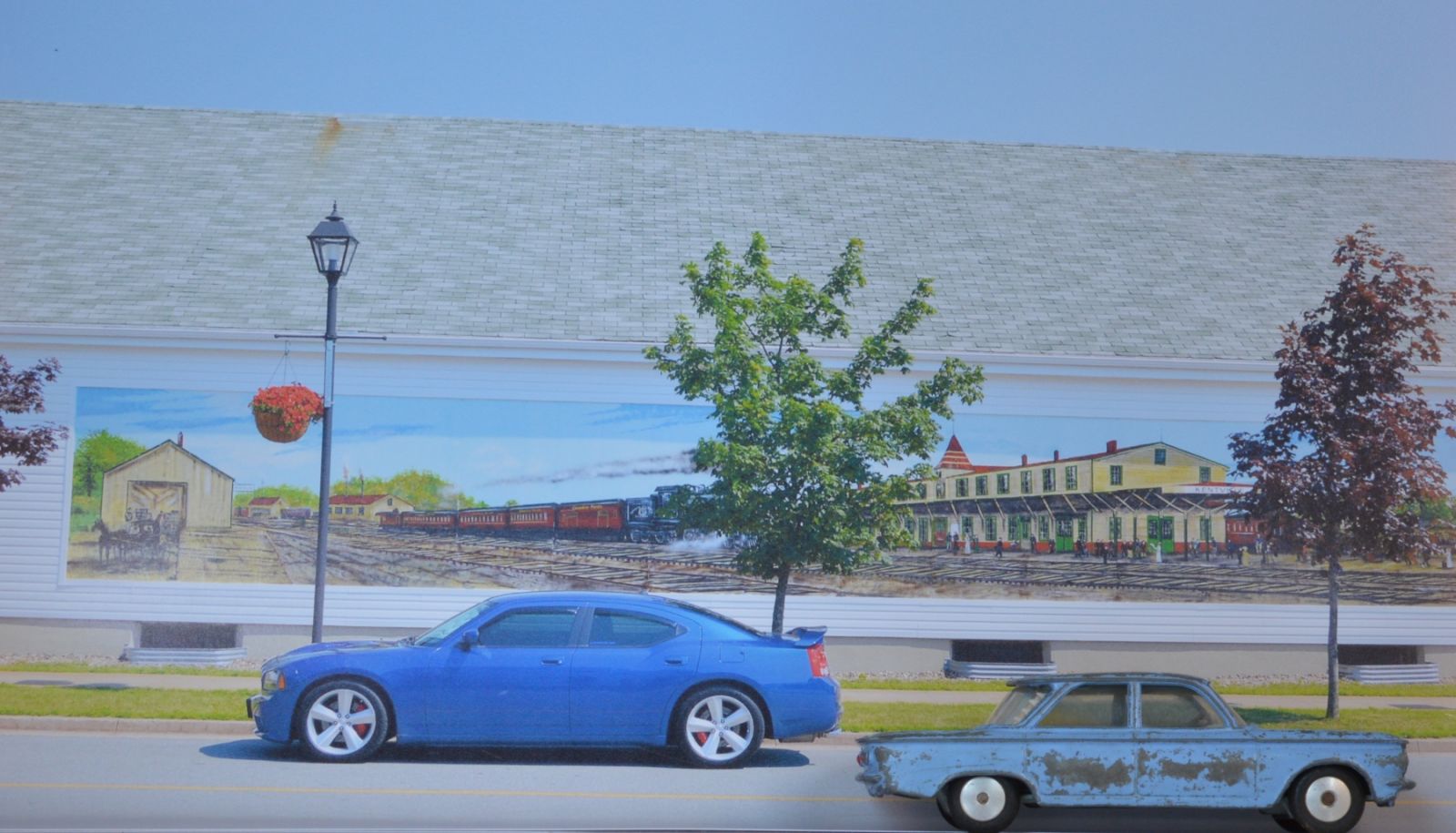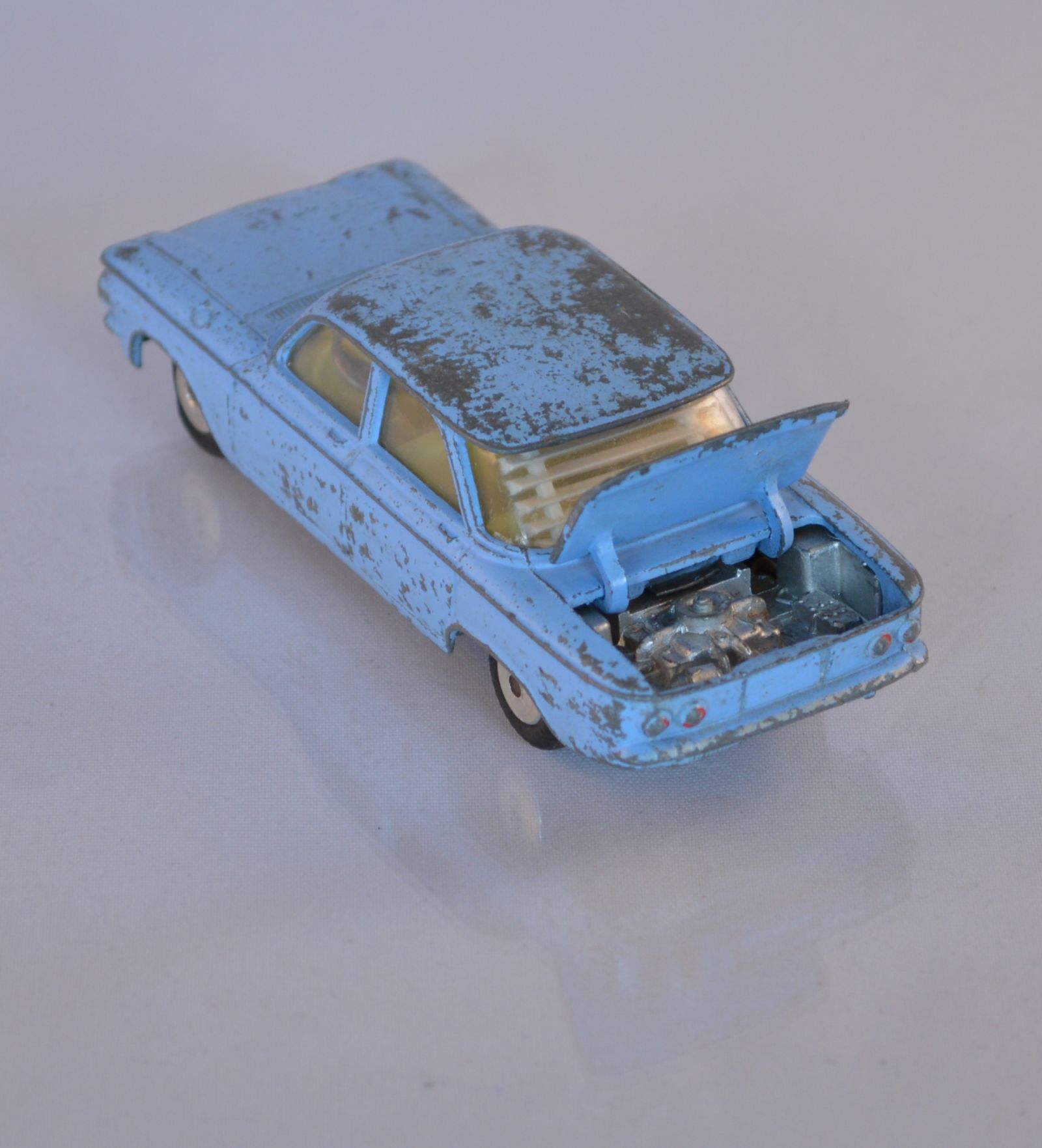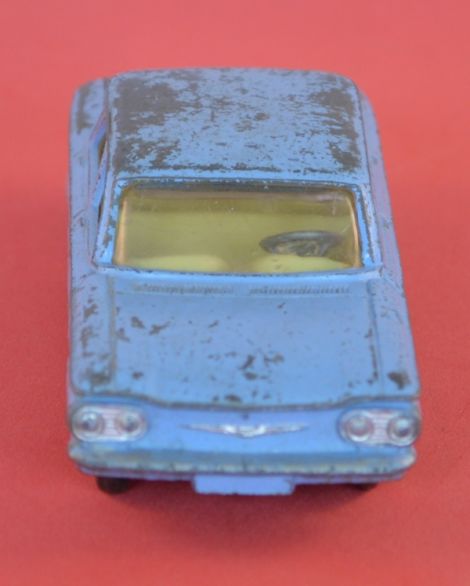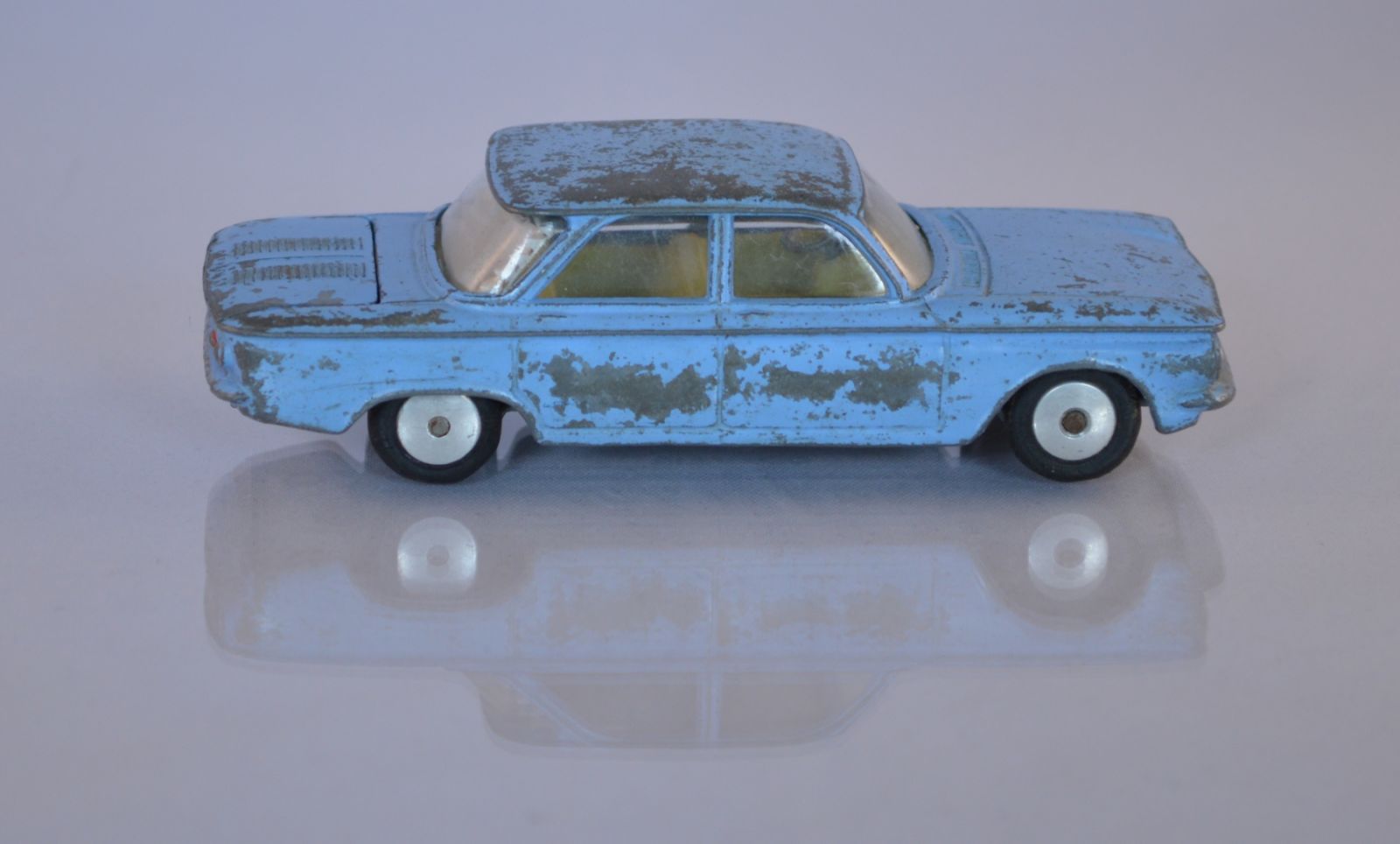Today’s featured car is Corgi Toys’ #229 Chevrolet Corvair.
Corgi Toys introduced their Chevrolet Corvair model in June 1961 and kept it in production for five years. It was available in pale blue (as in this example) or mid blue. It was also included in the Golden Guinea Gift Set where it was vacuum plated in gold.
The extra Corgi feature on this model is the Venetian blind in the back window.

The 1:1
introduction
By the late 1950s, the success of foreign compact cars (most notably the VW Beetle) could no longer be ignored. GM bigwig Ed Cole decided that Chevrolet should field a response but was perhaps a bit slavish in his requirement that it also follow the rear engine air-cooled architecture of the Beetle.

Cole began the project in 1956, ordering parts and blueprints under the guise that it was for GM’s Australian division, Holden. This is similar to the surreptitious development of the GTO package for the Pontiac LeMans.
Cole considered front- and rear-engine placement and 4- and 6-cylinder air- and water-cooled engines. He settled on a 140-cubic-inch, rear-mounted, flat 6, air-cooled engine, powering a 15-foot, five-passenger car.

In terms of weight distribution, cooling and noise, it was far from ideal. The front-engine/front wheel-drive Austin Mini was the future, the Beetle was pre-war technology with a limited shelf-life.
Nonetheless, the 1960 Corvair did have its share of redeeming features. Styling was clean and attractive, because there was no drive shaft hump or transmission tunnel, interiors were quite roomy. Sedan, convertible, coupe, wagon and even a van were available.
The Corvair also pioneered exhaust gas-driven turbocharging.
Ralph Nader, looking to make a name for himself, latched on to the swing-axle rear suspension, deeming it unsafe and the Corvair never recovered.
Corvair Van and Truck
The base version of the van was the Corvan panel van, with no side or rear windows. The passenger version was named Greenbrier. The Greenbrier normally had windows all around and six doors, although an option was to have eight doors where there were opening double doors on both sides. The Greenbrier seated up to nine people with the available third-row seat. The Greenbrier also had a camper option.
A Corvair truck could be ordered as a “Loadside” or “Rampside”. The Loadside was essentially a pickup truck with a standard tail gate. The Loadside was only produced two years and is the rarest of the Corvairs; production totaled 2,844 in 1961 and 369 in 1962. The Rampside had a side ramp to be used for loading and unloading cargo. These were used by the Bell Telephone Company, because loading and unloading of cable drums was eased by the side ramp.

Interesting Facts
Motor Trend magazine’s Car of the Year for 1960, Corvair had GM’s first all-independent suspension. To use an existing manual transmission, the engine rotation had to be reversed so as not to have one low forward gear and four reverse.
The Corvair’s unibody construction with welded front fenders was a first for GM.
Some 8,000 Corvairs were stockpiled at the GM’s Milford, Mich., Proving Grounds in preparation for the October 1959 launch; 250 were “swimmers” (caught in a flood) but cleaned up, reupholstered and sold.
Initial Corvair models were 500 and 700 four-door sedans. The most basic 500 is known as the Caveman for its simplicity. Coupes followed in January 1960, then the Monza coupe with 4-speed on the floor in the spring.
Chevrolet dealers were dismayed by the initial price, which could climb to $2,500 with Powerglide, heater and radio, only $200 less than a full-size Biscayne.
Gas mileage could be as high at 26 mpg highway, until the VW-style gasoline-powered heater was fired up at a loss of 6 to 8 mpg.
A boatload of 1960 Corvairs was sent to Cuba before the revolution. At last count, three survive; two reportedly running with front-mounted Russian motors.
In 1961, the Corvan panel van, Greenbrier passenger van and Lakewood station wagon and Rampside pickup were introduced. Air conditioning was optional.
One of the rarest Corvairs is the 1962 Loadside pickup. Only 369 were made, with a well in the center of the floor that could not be swept out.
A radical 1965 redesign with Fisher Z body saw the rear suspension resemble Corvette’s to address safety issues (see “Unsafe at Any Speed”). And the heater and A/C were improved. But without the pop of the V-8 Ford Mustang, sales dwindled and opened the door to the Panther (Camaro).
Don Yenko extracted up to 240 h.p. from Yenko Stinger Corvairs, which were competitive Sports Car Club of America racers. He built 100 in one month in 1965, with a total of 185 from 1965-67.
In 1968, XP-892 was shown as a full-size model for the 3rd-generation Corvair, planned for 1970, but scrapped. However, the 1974 Holden Monaro HJ coupe borrowed some styling cues.
The rarest Corvair is the amphibious Corphibian Loadside pickup. One was built. The GM plant in Oshawa, Ontario, built 100 amphibious Corvair Dynatrack articulated vehicles for the U.S. and Canadian Armies. The Australian Army ordered 500 but didn’t have the money upfront.
By 1971, the National Highway Safety Transportation Board declared the Corvair no less safe than anything else on the road in the early 1960s. Take that, Ralph Nader (the consumer crusader who made his name in 1965 with “Unsafe at Any Speed,” the book that targeted the Corvair).